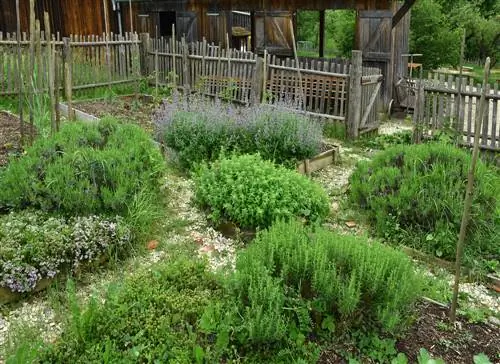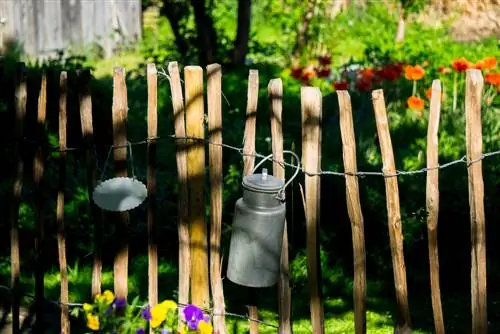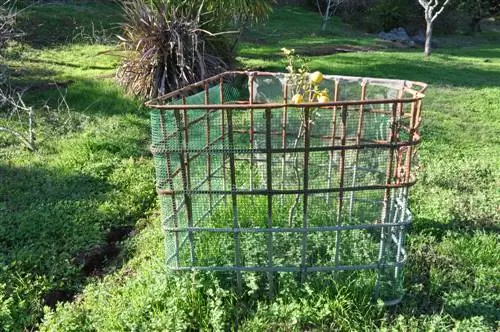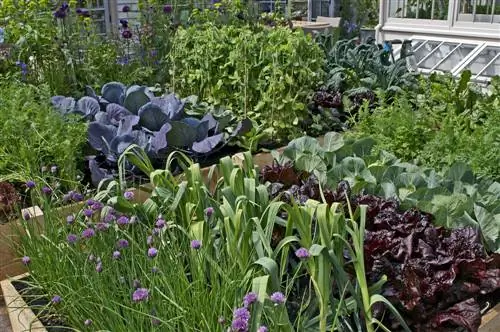- Author admin [email protected].
- Public 2023-12-16 16:46.
- Last modified 2025-06-01 06:02.
To protect the vegetable patch from pets or weather conditions, you can enclose it with a fence, possibly with vegetation. This also makes sense for design reasons. There are different variants available for the vegetable patch, which we would like to introduce to you in this article.
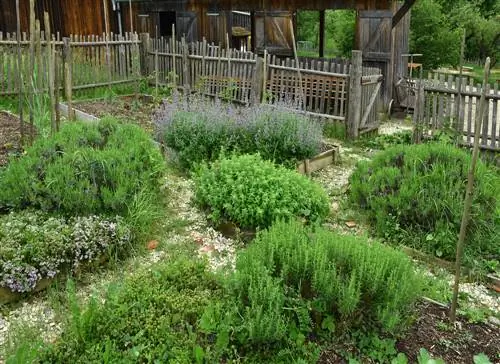
What type of fence is ideal for the vegetable patch?
Various fences are suitable for the vegetable bed, such as evergreen woven fences, garden specialist bed fences, overgrown bed fences or evergreen bed borders. These offer protection from pets and weather conditions and enhance the look of the garden.
Evergreen wattle fences
Typical bed borders in cottage gardens with a wild, romantic look are low wicker fences (€27.00 on Amazon). You can get these in different heights from garden retailers. However, weave fences can also be easily made yourself:
- Drive in posts at the corners of the bed.
- Stick three to five thick rods into the ground at equal distances.
- Weave these with flexible willow rods, which are repeatedly beaten with a board.
Bed fences from garden shops
These are available in different dimensions and designs so that you can optimally coordinate the fencing with your garden design. Low fences made of wrought iron or white-painted metal look great in English-style gardens. Wooden models blend in very well with natural green spaces.
The work required for these fences is minimal because they are simply stuck into the ground. This is extremely practical if you want to expand the bed, because the fence basically grows with you.
- Overgrown border fences offer good protection from wind
The location of the vegetable patch is not always optimal. Especially in regions where there are occasionally strong winds, the bed fence not only serves as a visual barrier. It also effectively protects the vegetable plants from the effects of the weather.
Dense wooden fence elements that can keep out the wind are ideal here. However, these should not be completely impermeable to wind, because if a light breeze does not regularly blow through the vegetable patch, susceptible plants can develop fungal infections and other diseases.
Alternatively, you can install a fence made of wire mesh or trellis and cover it with greenery. Climbing plants such as:are suitable for this purpose
- Nasturtium
- Veca
- Clematis
- Firethorn
- Climbing rose.
A beautiful, green fence is created, which visually enhances the surroundings.
Evergreen bed borders - a pretty alternative
Tip
Evergreen borders are a pretty alternative. These, for example made from boxwood, have a long tradition. However, boxwood is not only quite expensive to purchase, it is also very susceptible to infestation by the boxwood borer. It is therefore worth considering alternatives such as the small holly or dwarf yew to limit the vegetable patch. Herbs such as lavender or chives are also suitable for bordering beds with high decorative value.

